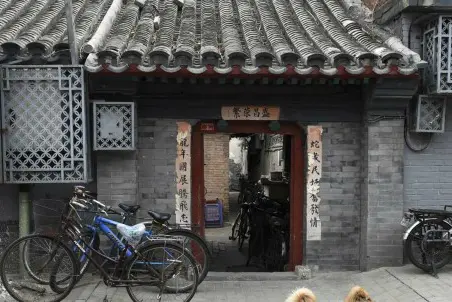(SOUTH CHINA MORNING POST)In ancient times, all roads may have led to Rome, but on the mainland today, it takes extra effort to get from one city to another, with avenues often blocked by security checkpoints, walls or fences.
As the personal wealth of the Chinese increases, so too has car ownership, rising from 58 million in 2011 to 124 million last year, according to the Ministry of Public Security. And the number is expected to grow as much as 16 per cent in the next five year.
This poses enormous challenges to urban planners, who are struggling to ease persistent traffic congestion. And now they have looked to gated communities for a solution.
They argue that these communities are not part of China’s architectural tradition. Rather than walls, fences, gates and guardhouses, residents seem to prefer the concept of small but connected neighbourhoods.
A good example is the hutong(public alleys) and connected quadrangle courtyard homes (compounds) in Beijing. Gated communities began to emerge in the 1950s after the Communist Party took power.
Government departments, military agencies and state-owned companies acquired swathes of land in cities to build gigantic compounds, where employees were offered a wide range of benefits and amenities, including flats, schools, hospitals, markets and even cinemas.
These communities are still seen as symbols of privilege – they occupy the best locations in the cities, and outsiders often need a special pass to enter.
By the end of 1980s, it was estimated that Beijing alone had as many as 25,000 such gated compounds owned by different government or military departments as well as state-owned companies.
Even after the commercial real estate market emerged in the late 1990s, most private property developments also remained closed to the public – partly because the developers and tenants, rather than the government, are responsible for paying for the management and maintenance of their facilities.
Pu Miao, a Shanghai-based architect and academic who has researched communities, estimates than 80 per cent of residential compounds built in Shanghai between 1991 and 2000 were walled, while in Guangdong, 54,000 such communities, which housed 80 per cent of the population, were closed to the public.
This is in stark contrast to Hong Kong, where the government owns all land and requires under its lease agreements with developers that pedestrian and vehicular access is open to the public.
Safety concerns are often cited as the main reason to keep communities gated.
A 1996 report by the People’s Police, published by the Ministry of Public Security, noted that crime “dropped by 85 per cent” and “no motor vehicles were lost” in 10 residential communities in Beijing’s Xicheng district after 14 road intersections in the area were blocked.
During the severe acute respiratory syndrome epidemic of 2003, many residential communities across the country gated themselves in from outsiders, a move that is still widely credited for prevented wider transmission of the disease.
But now, as cities grow more crowded and jammed, planners hope to restore Western-style residential blocks built on more efficient grids of public roads, though experts admit that popular acceptance of such a mindset will take a long time.
“The charming part of a city is the transition space between public and private life, and no one wants to expose their private lives to strangers,” said Wan Qian, an architect and urban planning expert at Huazhong University of Science and Technology.
The key to change, Wan said, was not simply demolishing physical walls and fences, but overcoming the mental barriers of the community.
 简体中文
简体中文

